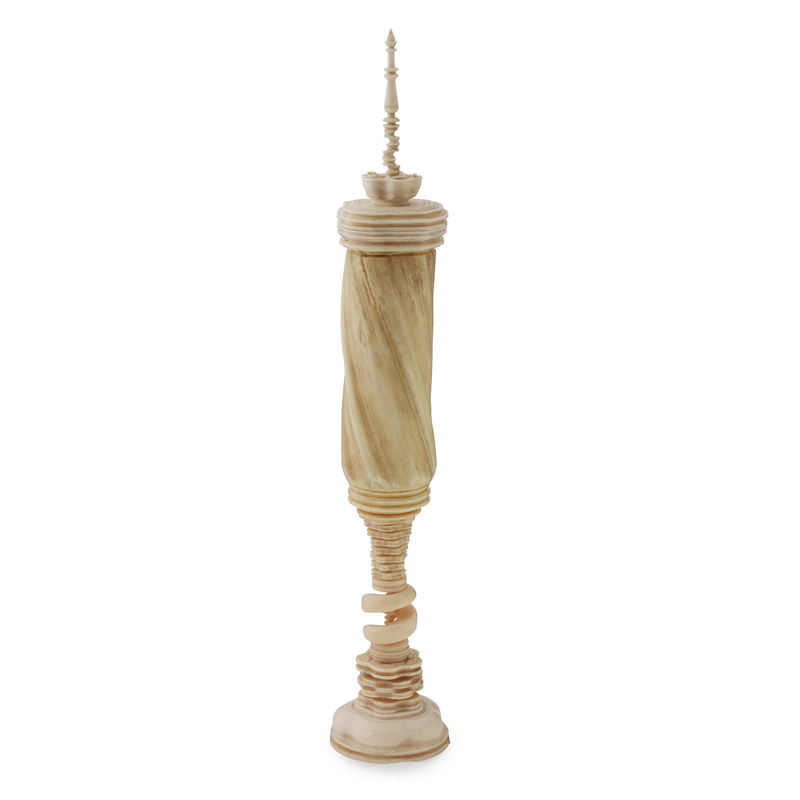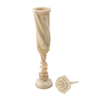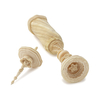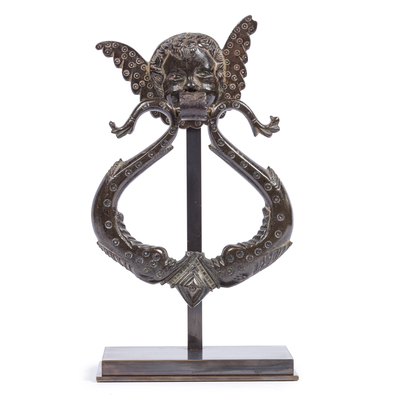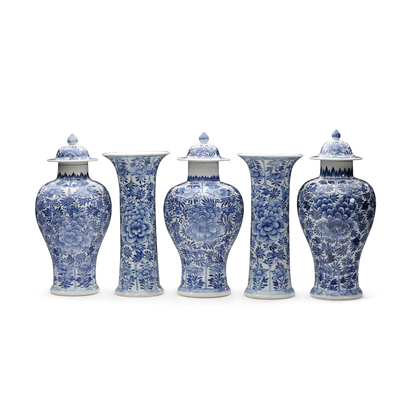Cup of narwhal tusk and turned ivory
Global shipping available
- Origin
- Southern Germany
- Period
- Last quarter 17th century
- Material
- Narwhal tusk, ivory
- Height
- 37 cm
- Diameter
- 6 cm
Questions about this object?
Please use one of the contact options below:
Description
This refined and delicate cup is made of ivory and narwhal tusk. The artfully twisted foot and lid of the slender cup are made of ivory and the centre part is narwhal tusk. The twisted spiraling ivory of the round foot and the whimsical shapes of the lid imitate the organic structure of the narwhal tusk. Even the inside of the foot and lid are richly decorated. On the flat lid is a flower-shaped half knob, with a layered and twisted column. Turning the cup required not only a steady hand, but also an intellectual approach to the design of the piece and a perfectly calibrated lathe.
In the sixteenth and seventeenth centuries, turning was a distinguished hobby, practised by European nobility, princes, and kings. The turning of ivory, using a mechanically powered lathe, was seen as an appropriate and virtuous pastime, in which the practitioner was trained in precision and concentration. These objects fitted perfectly in the cabinets of curiosities; they combined craftsmanship and natural material with the growing knowledge of geometry. These beautiful, virtuosic objects often had fabled abstract forms and were considered the showpieces of a kunstkammer collection. The possession of such pieces was not only a testament to one's wealth and intellect, but also to one's power, as the manipulation of natural elements meant that nature could be categorised and shaped by man.
The turning was done mechanically with a lathe: a piece of ivory was xed in the lathe, which could make the object move in two or three directions at the same time. The maker took a sharp object and held it to the rotating ivory. The different movements and directions of the mechanism allowed the maker to shape the object as desired. The craftsmanship of the maker, and in particular his or her geometrical and spatial insight, steady hand and precision, determined the complexity and sophistication of the nal object. The mechanism of the lathe, which can be adjusted, makes these exceptional turned objects the first examples of ‘machine-generated art’.
